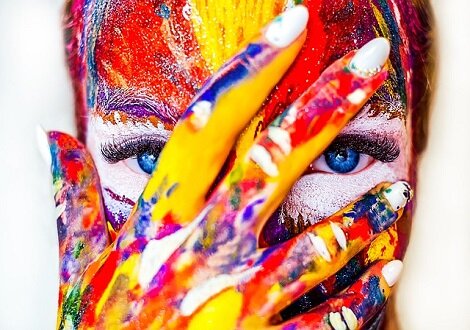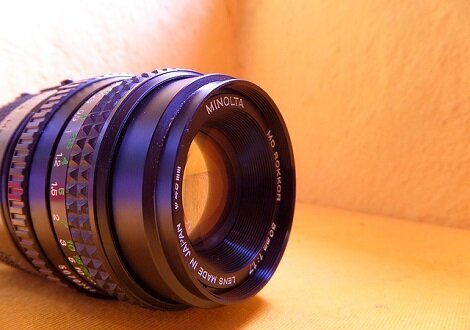Digital Photography Tips
I guess the ETTL technique will probably be new to a lot of folks reading this, but I guarantee two things: 1) This is going to lead to better picture quality on your night photographs. 2) It's simple to learn, and entertaining! Along the very same lines, a strobe is much more destructive to ETTL, since even though light burst comes and goes in a flash, it is really bright. With this circumstance, I propose foraging your cupboard for case your strobe arrived in if you purchased it. Then set the strobe in that situation before shooting it.
See if you Another choice is to use a thick coating of black paint on the front of the flashlight lens. Just make sure you use detachable paint, which means that you can peel it off, prompting you need to return down the road in the dark. As mad as it seems, you can "freeze" activity even in the dark. As you are not concerned about all of the tedious challenges of keeping highlights, midtones and shadow information, you can control your shutter speed to virtually whatever you desire. By way of instance, while performing a night shoot Upward Falls at North Cascades National Park, I did not desire motion blur from the water.
Source: https://etacanada.pl/But since I had been using ETTL, I managed to take 1/60, f/4.5, ISO 2000. Afterward, I got good picture quality while hammering the activity of the drops (Figure 6) regardless of the very low light. Finally, pixel-peepers will observe that the ETTL approach diminishes highlights a little bit. But do not be concerned about it. The same as Meghan Trainor sings within her catchy pop tune--"It is about this bass, relating to this bass, no treble"--it is like nighttime photography.
It is about the shadows, no stresses, concerning the shadows. After all, night photography is about halfway over the largest shadow in the entire world. So I cut the following 2 stops of light by simply falling my ISO back, to 800, and raising the shutter speed to ten minutes. However, it led to what I call a "Thick Shady" histogram, wherein it is possible to observe that the whole image data is pushed to the left, however you are still able to make a slope of information straightened on the side. By boosting my shutter speed to two weeks, I managed to narrow this to a slender field of histogram information (Figure 4)--or what is called "Slim Shady." At Voyageurs National Park I have an chance to photograph these larger horned marmots.
Painting introduced
The demand for light painting introduced a additional barrier to attaining a fantastic ETTL vulnerability, which I circumvented employing the snoot process described previously. Some photographers reach the ETTL effect entirely in post-production. To put it differently, they picture the scene using a "conventional" exposure. They then import the photograph to Lightroom, pull on the Exposure slider all the way into the left, decrease the Shadows placing a bit. However, the effect is not the same. Get it directly in-camera. However, at what price? We get so caught up in catching this dim light which we do not notice that we are making decisions which in each other photography scenario are really detrimental to image quality: However, I did not want conventional--I desired ETTL and all of the benefits that have this. So I shut the aperture down into f/5.6 and fell the ISO to 1600. Can purchase an excess case and place the flash in either. (Well, perhaps not today that I am sharing this suggestion.) If you are using ETTL to determine exposure for a scene you want to light-paint, then receive a snoot that fits on the end of your flashlight, like the Universal Connector produced by mild Painting Brushes.
Cover the much launching of your flashlight using a thick and then expensive layering of gaffer's tape A Closing Note on ETTL As good as ETTL is for enhancing picture quality in nighttime photography, there are a few barriers to work around. Jacking up the ISO to amounts much beyond what the photographers the past would think as factual Ancillary Benefits of ETTL For starters, this vulnerability technique gets trickier when you are painting.
Flashlight
Libero velit fugit blanditiis tempora repellat iste inventore amet quaerat ex aliquid sint labore placeat esse.
Flashlight
It is particularly troubleshome when you are employing a sunbeam-like flashlight like the Coast HP7R, since it completely destroys your hard-achieved left-biased exposure. How? With the addition of light. But do not worry--there is a simple solution. In case you choose to experiment with ETTL, please don't come back and then discuss your results from the Remarks section. What's ETTL?
Picture quality
We hear everybody in the photography business speaking about picture quality, picture quality, picture quality. Conversations (and novels, articles and blog posts) are rife with feedback and information about how to push the limitations of their cameras and lenses so as to receive the best picture quality in low-light scenarios.
Matrix metering
Along with picture quality, ETTL has additional benefits. How does this function? It is simple. Together with your camera Matrix metering, take a test vulnerability that is probably a few stops darker than the meter reading. You may just imagine--precision does not matterwhat kind of love print picture.
Histogram
Studying your histogram, adjust the vulnerability down and maintain shooting test frames before all of the information is jammed up against the other hand, along with the "shady side," of this chart. We push histogram over by having a smaller aperture, a much quicker shutter speed, a lower ISO. Another side benefit of ETTL is you are able to hand-hold your camera after creating night pictures.
ETTL vulnerability
Since you're able to shoot these high shutter speeds, you do not really have to take a tripod to the area with you. But my ETTL vulnerability was two minutes, f/5.6, ISO 800, that mended each one of those dire effects of the very first vulnerability. Additionally, f/5.6 is the sharpest aperture for your Nikon lens I had been using, which further enhanced the last picture. Click/tap to find the photograph at full size. Not a fuzzy pixel in sight. Not a place of sound. The picture quality is ideal. Ideally, nighttime photographers will need to be thinking the other way round: How can we enhance our low-light photographs in a manner that capitalizes on what we all know about shooting daylight? The solution is simple, and it boils down to shooting with this doctrine, using this technique: Expose Into The Left, otherwise called ETTL.





